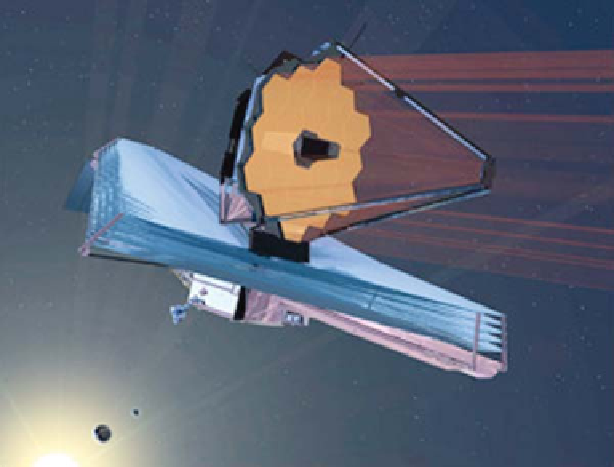Environmental Engineering Reference
In-Depth Information
Fig. 11.2.
The James Webb Space Telescope (JWST) (image credit: NASA)
level list of observations rather than a detailed timeline. This will simplify the
ground system scheduling activities and permit the spacecraft to perform over
many days with little or no direction from the ground. JWST will be able to
operate autonomously for periods of several days between these uplinks, and
therefore, continuous stang of the control center will not be required in the
latter years of operations. The observatory will operate nearly autonomously
throughout its science operations phase. Control of most housekeeping and
science collecting functions will be provided onboard the observatory by an
event-driven command system. During the science operations phase of the
mission, one communications contact per day and one command load per
week or two will be sucient to support operations. Figure
11.3
shows an
early design of autonomous attitude control transitions for JWST [
74
].
11.4 Autonomous and Autonomic Systems
in Future NASA Missions
The NASA 2006 Strategic Plan states:
NASA also will develop and test technologies for power and au-
tonomous systems that can enable more affordable and sustainable
space exploration by reducing both consumables launched from earth
and the risks for mission operations. Advanced power systems, includ-
ing solar, fuel cell, and potential nuclear power, will provide abundant

